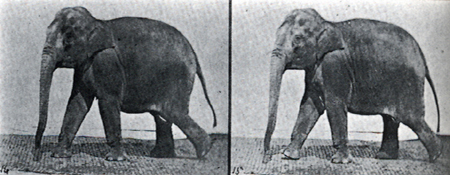 |
||
| Origin Myth | ||
| HOME The Art of Memory Origin Myth Vivid Imagery Memory Is Personal Your Inner Monty Python The Use of Places Poetry and Song The Grid System Why It Works The Number Mnemonic Free Ass-sociate Conclusion |
We speak today of the "reading experience." For pre-modern people, though, the aim of reading was not diversion, i.e. having a fleeting or passing experience with a good book. The point of reading was memorization. Because in all likelihood -- if you were a traveling scholar, say -- you’d never get another chance to look at that book again. Even if you were a monk or priest, your opportunities to read the Bible would be limited at best. If you were a learned man in ancient Greece or Rome, or in the Middle Ages, you would have known many books by heart; your mind would have been a well-organized library of texts that, in your studies and travels, you had had the good fortune to hold and read and study. So how did they do it? What are the principles of artificial memory that enabled pre-Gutenberg people to hold libraries of knowledge in their heads? The basics of the art of memory can be found in its origin myth. It goes like this. A certain nobleman of Thessaly, named Scopas, was giving a banquet, for which he had commissioned the poet Simonides of Ceos to give a poem. Simonides delivered a lovely lyric poem largely in praise of his host, but also managing to get into his verse a word of praise for the gods Castor and Pollux. At the end, Scopas meanly told the poet that he would only pay him half the agreed fee, and that he should ask his friends, the divine Twins, for the other half. During the meal that followed, a message was delivered to Simonides stating that a pair of young gentlemen had arrived outside and wished to speak with him. The poet excused himself from the table and went outside, finding nobody. However, in his absence, the roof of the banquet hall collapsed, killing Scopas and all the guests. Simonides was lucky. When the aggrieved and horror-struck relatives arrived at the house to collect the bodies of their dead for burial, it was impossible for them to tell which body was which because the remains were all mangled beyond recognition. But Simonides found he could readily identify the corpses from where they had been sitting around the table. It was then (the story goes) that the poet realized what a valuable thing it was to recall things according to their places, and so he then laid out the rules that became the art of memory. If you were a defense lawyer, for example, and needed to remember all the evidence in a case to lay out your argument, you first created a vivid mental image to stand for each piece of evidence. Second, you “placed” each of those images, in sequence (i.e., according to the argument you were going to deliver), in some building or physical environment that was familiar to you. You did this in your imagination, as you mentally walked through that environment. Then, when the time came to recall what you had remembered – that is, when delivering your impassioned plea on behalf of the accused in court – you just took a mental stroll through that same memory environment, visiting each vivid image in sequence and laying out the facts they stood for. The same principles were used in the Middle Ages, only it seems that the practice of using architecture as memory spaces waned in favor of keying memory imagery to mental grids. The memory wizards of the Renaissance, such as Ramon Lull and Giordano Bruno, designed elaborate grid systems by which vast quantities of knowledge could be stored and cross referenced like a modern database or spreadsheet. Still, the principles were identical: Create vivid images to stand for individual items to be remembered, and “place” them in some kind of structure; recalling the items was then a simple matter of revisiting squares in the mental grid and retrieving what you had deposited earlier. Memory works by breaking things down into chunks and putting them back together. So lets break the art of memory down into two chunks: the vivid imagery part, and then, later, the space/structure part. |
|
All material copyright 2006
Eric Wargo